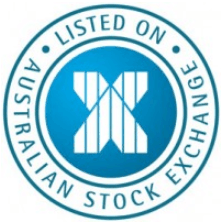
Chris Weston, Chief Market Strategist at IG Markets
Mario Draghi has confirmed his stature as a central banker who delivers and lives up to what is expected of him, and more.
The ECB has cut conventional monetary policy as far as it can go, and the wash up of penalising banks 20 basis points for the luxury of parking funds on the ECB’s balance sheet will be anchored front-end bond rates (seven EMU countries now have negative two-year bond yields). We should see also a steepening of the curve as longer-term inflation expectations increase modestly.
Perhaps the key take-out from the meeting though was the aggressive (and potentially optimistic) expansion of the banks’ balance sheet; back to levels seen in 2012 of EUR 3.1 trillion (currently EUR2.038 trillion). It will take some time (and a major deterioration in inflation expectations) for the ECB to go down the full-blown QE route and buy government debt. However the measures announced to buy a broad range of asset-backed securities were not only larger in size and range, but will also be bought sooner than many had forecast.
Full marks to Mario
So in the absence of full-blown QE, Mario Draghi’s measures are about as aggressive as they could be at this stage. With the ECB’s balance sheet likely to move back above the level of 2012 over the coming years, and the potential for the Federal Reserve to start to contract in late 2015/early 2016, the ECB has further directed traders and money managers to continue to push the EUR lower. Recall the ECB’s own rule is that for every 10% fall in the EUR (trade-weighted basis), it should lift inflation by 0.4 to 0.5 percentage points.
The measures are another green light to continue the EUR-funded carry trade, so EUR/AUD rallies should be sold, as should EUR against Asian emerging markets and Latin America currencies. The EUR is going much lower in my opinion, with EUR/USD potentially targeting the 2012 low of 1.2042 in 2015.
EUR/USD is on track for a fifth consecutive week of losses, however the pair is clearly oversold and due a bounce, although it seems the whole world will be ready to pounce. The 14-RSI is on the daily chart is 17, and you have to go back to 2008 to see these sorts of conditions. Perhaps today’s US payrolls report will be the trigger given all the traditional leading indicators suggest we will see a strong number and traders have piled into the USD of late.
Consensus is we see 230,000 jobs in the payrolls report (the economist range is 310,000 to 190,000), which is just under the six-month average of 248,000. Keep an eye on the average hourly earnings (consensus of 2%) and the U6 unemployment rate (this is the broadest unemployment rate which Janet Yellen has referenced of late).
The USD looking very appealing
I have expressed my view of late that the USD is in the early stages of a multi-year cyclical bull market, and over the last 12 hours my conviction has heightened somewhat. Certainly US data has been on fire recently, and smoothing this out (using the Citigroup economic surprise index, which measures economic data relative to economist consensus) you can see this index is at the highest level since January and certainly elevated relative to the five-year average. This should continue to unfold with a number of the more forward-looking economic indicators suggesting the Fed should alter its language in the upcoming September 17 meeting.
It is worth highlighting that the Federal Reserve put up a note on its website today, which has thrown weight behind my view. The research (one the many authors is Bill Wascher, the Fed’s top labour economist) suggests that many of the labour force issues, such as the multi-decade low in the participation rate, are structural and not cyclical. Janet Yellen said back in May ‘we really need to figure out what portion of the labor force participation rate decline is structural and what part is cyclical’, so this really does feel game changing. If the doves on the Fed board are sensing that the issues are structural, then the use of extraordinary loose policy seems futile.
We’ve also seen Fed governor Jerome Powell speak today, and while he is leaving the Fed soon to go back to academia, his comments that ‘significant parts of the FOMC statement need to change’ are fairly blunt.
Asia has not really reacted too much to the ECB measures, with China and Japan seeing modest index gains, while the ASX 200 has been held back by further downside in iron ore and rebar. European markets will therefore open on flat note, getting no real optimism from Asia.
The trade then seems to be continuing with the carry trade in the forex market, potentially using rallies in EUR/AUD and EUR/CAD to initiate shorts. The Eurostoxx banking sector rallied over 3% yesterday and this sector should continue to work well, however another way of looking at this is by taking the market out of the equation and looking at shorting UK banks as a pair’s trade on the idea of underperformance ahead of the September 18 Scottish referendum.